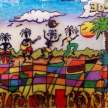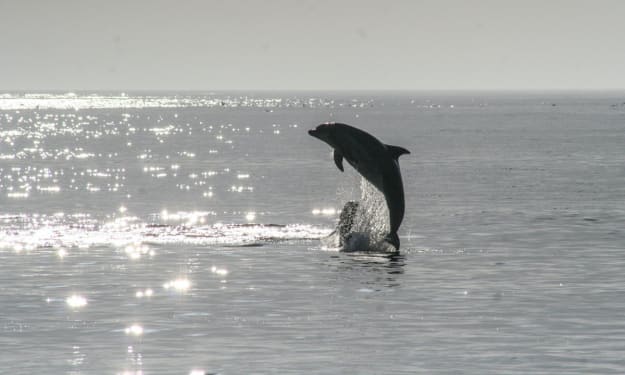Return of the Bison: Learning the Untold Stories of Indigenous Saskatchewan!
This article delves into the rich history and significance of the bison to the Indigenous peoples of Saskatchewan, exploring how their return is intertwined with cultural resurgence and environmental stewardship.

Introduction
The bison, often called the buffalo in North America, once roamed the vast plains of Saskatchewan in immense herds, serving as a crucial part of the ecosystem and an integral component of Indigenous life. Their numbers dwindled to near extinction due to overhunting and habitat destruction by European settlers in the 19th century. Today, the return of the bison symbolizes more than a revival of a species; it marks a reconnection to Indigenous heritage, culture, and the land. This article delves into the rich history and significance of the bison to the Indigenous peoples of Saskatchewan, exploring how their return is intertwined with cultural resurgence and environmental stewardship.
Historical Significance of the Bison
The Bison and Indigenous Peoples
Before European contact, the bison was central to the lives of the Plains Indigenous peoples, including the Cree, Nakoda, Assiniboine, and Métis. The bison provided food, clothing, shelter, and tools, making it an essential resource for survival and cultural practices.
Sustenance: Bison meat was a staple in the diet, rich in protein and nutrients. Indigenous methods of hunting, such as the communal bison jump, ensured sustainable practices and community cooperation.
Shelter and Clothing: Hides were used to make clothing, moccasins, and tipi covers, while bones were fashioned into tools and weapons.
Spiritual Significance: The bison held profound spiritual meaning, symbolizing abundance and the interconnectedness of life. Bison hunts were often accompanied by ceremonies and rituals that honored the animal and the land.
The Decline
The 19th century saw the rapid decline of bison populations due to mass hunting by settlers, driven by the fur trade and commercial interests. The loss of the bison had devastating effects on Indigenous communities, disrupting their way of life and contributing to the broader context of colonial oppression.
Commercial Hunting: Bison were hunted to near extinction by settlers and fur traders, leading to the collapse of the bison economy.
Land Seizure: The displacement of Indigenous peoples from their traditional territories further compounded the loss of the bison, leading to economic hardship and cultural dislocation.
The Bison’s Return: A Symbol of Resilience
Conservation Efforts
Efforts to reintroduce bison to their native habitats in Saskatchewan have been underway for decades, driven by both environmental and cultural imperatives.
National Parks and Reserves: Parks Canada has played a significant role in bison conservation, with successful reintroduction programs in places like Grasslands National Park.
Indigenous-Led Initiatives: Indigenous communities have also been at the forefront of bison restoration, viewing it as a means to reclaim their cultural heritage and sovereignty over traditional lands.
Cultural Resurgence
The return of the bison has revitalized cultural practices and strengthened community bonds among Indigenous peoples.
Traditional Knowledge: Elders and knowledge keepers share teachings about the bison, reinvigorating language, stories, and ceremonies connected to the animal.
Youth Engagement: Youth programs centered around bison conservation and cultural education foster a sense of identity and connection to heritage among younger generations.
Untold Stories: Indigenous Perspectives on Bison Restoration
Stories of Survival and Adaptation
Indigenous oral traditions and historical accounts provide a rich tapestry of stories about the bison, highlighting resilience and adaptation in the face of adversity.
Elders’ Narratives: Elders recount stories of how their ancestors adapted to the loss of the bison, finding new ways to sustain their communities while holding on to their cultural values.
Cultural Adaptation: Communities adapted their spiritual practices and subsistence strategies, integrating new elements while preserving core aspects of their identity.
The Role of Women
Women have played a crucial role in bison conservation and cultural revival, often acting as custodians of knowledge and leaders in community initiatives.
Knowledge Keepers: Indigenous women have been instrumental in preserving traditional knowledge about bison, including processing hides, preparing meat, and conducting ceremonies.
Community Leadership: Women lead many community-based bison restoration projects, advocating for sustainable practices and cultural education.
Healing and Reconciliation
The restoration of bison populations is also a story of healing and reconciliation, addressing historical injustices and fostering a renewed relationship between Indigenous peoples and the land.
Land-Based Healing: Programs that combine bison restoration with land-based healing practices provide opportunities for individuals to reconnect with their culture and heritage.
Collaborative Efforts: Partnerships between Indigenous communities, conservation organizations, and government agencies support reconciliation by promoting Indigenous leadership in environmental stewardship.
Exploring Indigenous Saskatchewan: Sites and Experiences
Grasslands National Park
Grasslands National Park is a testament to successful bison reintroduction efforts and offers visitors a chance to witness these majestic animals in their natural habitat.
Bison Herds: Visitors can observe bison grazing in the park's expansive grasslands, gaining insight into their behavior and ecology.
Interpretive Programs: The park offers educational programs that highlight the cultural and ecological significance of the bison, often featuring Indigenous perspectives.
Wanuskewin Heritage Park
Wanuskewin Heritage Park, located near Saskatoon, is a cultural and historical center that celebrates Indigenous heritage and the relationship with the bison.
Archaeological Sites: The park contains numerous archaeological sites, including ancient bison jumps, that provide a window into the historical significance of the bison to Indigenous peoples.
Cultural Programs: Wanuskewin offers workshops, exhibitions, and performances that showcase Indigenous art, dance, and traditions, emphasizing the bison’s role in cultural heritage.
Prince Albert National Park
Prince Albert National Park is home to a herd of plains bison and offers a unique opportunity to explore their role in the ecosystem.
Guided Tours: Guided tours provide educational experiences about bison behavior, conservation efforts, and the broader ecological context of the park.
Indigenous Interpretive Trails: Trails and exhibits developed in partnership with Indigenous communities highlight the cultural connections to the bison and traditional land use.
Dakota Dunes Casino and Resort
Dakota Dunes Casino and Resort, located on Whitecap Dakota First Nation land, offers a blend of modern amenities and cultural experiences.
Cultural Displays: The resort features displays and exhibits that highlight the history and significance of the bison to the Dakota people.
Cultural Events: Visitors can participate in cultural events, including storytelling sessions and traditional feasts, that celebrate the bison's role in Dakota heritage.
The Future of Bison and Indigenous Cultural Revival
Continued Conservation Efforts
Ongoing conservation efforts are crucial to ensuring the long-term survival of bison populations and their integration into Indigenous cultural landscapes.
Habitat Restoration: Efforts to restore bison habitats, including prairie ecosystems and grasslands, are essential for sustaining healthy bison populations.
Genetic Diversity: Initiatives to maintain and enhance the genetic diversity of bison herds contribute to their resilience and adaptability.
Strengthening Cultural Connections
The bison’s return continues to strengthen cultural connections and support the resurgence of Indigenous traditions and practices.
Cultural Education: Educational programs that incorporate traditional knowledge and contemporary conservation science foster a deeper understanding of the bison's cultural and ecological importance.
Community Empowerment: Empowering Indigenous communities to lead bison conservation efforts promotes self-determination and cultural revitalization.
Fostering Partnerships
Collaborative partnerships between Indigenous communities, conservation organizations, and government agencies play a vital role in supporting bison restoration and cultural revival.
Joint Initiatives: Joint initiatives that integrate traditional ecological knowledge with modern conservation practices create holistic approaches to bison management.
Policy Advocacy: Advocacy for policies that support Indigenous-led conservation and cultural preservation efforts contributes to broader goals of environmental justice and reconciliation.
Conclusion
The return of the bison to Saskatchewan’s landscapes is a powerful symbol of resilience, cultural revival, and environmental stewardship. For Indigenous communities, the bison represents a living connection to their heritage, traditions, and the land. As conservation efforts continue to restore bison populations, the untold stories of Indigenous Saskatchewan offer valuable insights into the profound relationship between people and nature. By exploring these stories and supporting initiatives that honor Indigenous knowledge and leadership, we can contribute to a future where the bison thrives as a testament to cultural resilience and ecological harmony.
About the Creator
ED CLEFF
I have over a decade of experience in crafting compelling and diverse content. My portfolio spans multiple industries, including technology, healthcare, finance, and lifestyle, given me an added advantage in all my areas of specialization.
Enjoyed the story? Support the Creator.
Subscribe for free to receive all their stories in your feed. You could also pledge your support or give them a one-off tip, letting them know you appreciate their work.






Comments
There are no comments for this story
Be the first to respond and start the conversation.